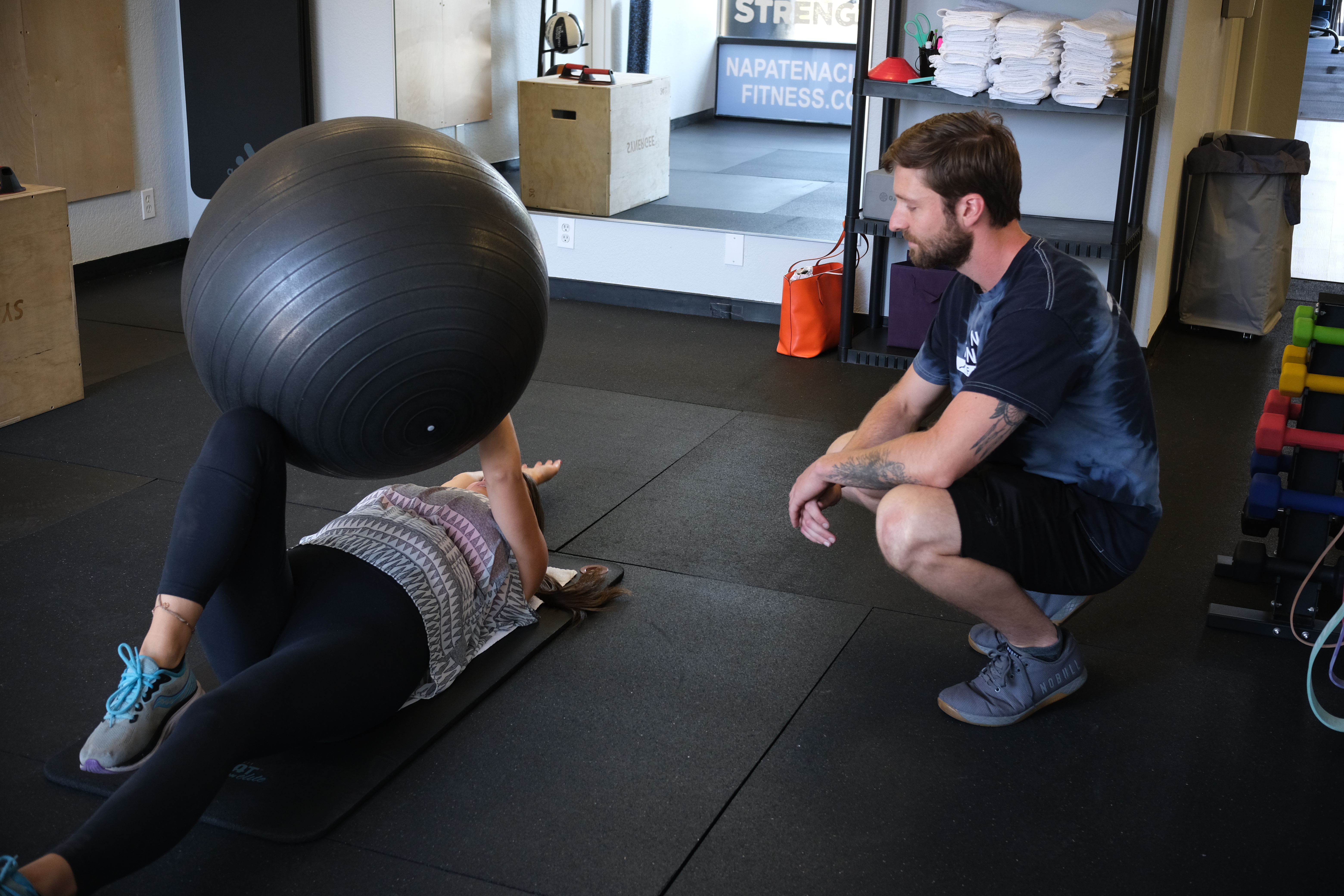Lower back pain is one of the most common physically debilitating ailments experienced in today’s society. Symptoms such as pressure and tightness in the thoracic and lumbar regions of the spine affect the population in a variety of presentations. Dull pain in the lower back when getting out of bed in the morning, stiffness when standing up after extended time in a seated position, or fear and apprehension to bend over and pick something up from the ground due to disrupted lower back pain are a just a few examples commonly experienced by individuals dealing with low back pain.
The cause of low back pain can be created in a variety of ways. Suboptimal posture for people who sit at desks all day could be caused by rounding of the upper back and lack of activation in the abdominal and gluteal muscles. The stabilizing muscles connecting each vertebra to each other which are responsible for structural support when standing, bending forward, and walking could be deconditioned. The lack of muscular tone and core fitness can lead to shifting of the vertebrae past a healthy range of motion, causing pressure on the supporting discs and possibly pressing on the spinal root nerves that give our body’s organs signals to function properly. Needless to say, the awareness of inadequate conditioning of the muscles surrounding the spine, abdominal, and hip regions of the body can’t be overstated if our goal is to function to the best of our ability in our everyday lives.
In my experiences of interning and working at various physical therapy clinics, I observed the physical therapists I was fortunate enough to mentor under work miracles and cure individuals who came into the clinic with back pain. We worked with patients who had the common “tweak” in the low back to the very advanced cases in which surgical intervention was performed on the spine weres screws and rods were installed to correct a severe spine injury. One of the first exercises the PTs recommended was the posterior pelvic tilt exercise.
The PTs would cue the patient to sit down on a chair and put their hands on the crest of their hips in the front of their body. Then, they would cue the client to bring their hips toward their ribs. That was, is it. Being a young intern working on my master’s thesis, I had no idea about the benefits of this exercise and was oblivious to the benefits this simple and effective technique had on people with lower back pain. “Wouldn’t it be useful to strengthen the core muscles with planks and stretch the lower back?” I thought. I learned a valuable lesson that my order of operations when addressing lower back pain was pretty much wrong. Similar to the bracing foundation of the framework and cement foundation that holds up a house, the deep, intrinsic muscles surrounding the spine and connecting the spine to the hips and thighs were what truly needed to be conditioned when resolving lower back pain.
To perform a seated posterior pelvic tilt, place your index and middle finger on the crest of your hips located just below the navel and on the outside of the body. Gently “tuck” your hips by pulling the crest of the hips toward the navel. You should feel a slight muscular contraction in your abdominals and glutes. Depending on the tightness and condition of the spinal stabilizer muscles, you might feel a gentle stretch within the vertebrae of the lower back.
Performing five to ten repetitions of this simple and effective exercise once or twice per week has the potential to not only alleviate symptoms of lower back pain but also help reinforce optimal posture and mitigate the possibility of other nagging pain symptoms caused by lower back pain dysfunctions such as sciatica, piriformis syndrome, of sacroiliac joint dysfunctions.
Strength training and stretching for the lower back is of the utmost importance. However, let’s not forget about the deep internal muscles that act as the nuts and bolts for our spine and hips. Without adequate strength in our spine, hips, and thighs, we’ll topple over. Spend some extra time to prevent injury on the center of the body with pelvic tilt exercises and we can ensure our back remains healthy and strong.
Sean McCawley, the founder and owner of Napa Tenacious Fitness in Napa, CA, welcomes questions and comments. Reach him at 707-287-2727, napatenacious@gmail.com, or visit the website napatenaciousfitness.com.

